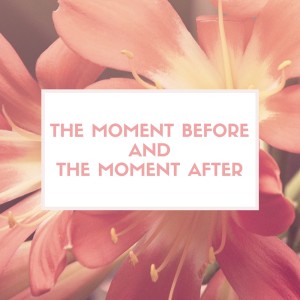By Marci Liroff
Any good actor knows he needs to prepare the “moment before” any scene. Often forgotten is the “moment after.”
When I’m holding auditions for my projects, I see so many actors who have done their research on the project, made character choices, and are off-book. Yet when the scene starts, I see them turn on their “acting switch” and start acting, rather than just leaning back into the character and the scene at hand.
You have to know what happened leading into the scene you’re reading (whether it’s an audition or on set). Many times, you’ve only received a set of sides, no script, and a minimal character description with no way of knowing what just happened. Guess what? You have to make it up and flesh it out. Find clues within the material and come up with your own “moment before” so that you have an organic place from which to come.
The action and emotional moments don’t just come with your first line. They come from the second the scene starts, even before the camera is rolling. There are golden moments before the first line is delivered.
I always ask my cameraperson to shoot plenty of “heads and tails” to catch this magic. “Heads” (what we get on tape) refers to the specific choices that a smart actor does to set the scene before the first line. “Tails” is the amazing emotion we see at the end of the scene when most people are so into the role that they unconsciously show us something about the character we didn’t even know. Remember not to stop the scene and turn off when the scene ends. Stay in the moment and continue your emotions until you hear “cut” or the creative team comments on your performance.
I coach my clients to create a short sentence of a main objective to trigger their emotions going into a scene. Keep the stakes high for your objectives and the scene will have a deeper emotional life; “I have to get this information from her or I’ll lose her/I’ll die/she will leave me.” Along with this, you can create a visual “flash memory” of photos of what led up to this event. You have to be able to smell it and feel it as well.
The moment before isn’t what just happened. It’s what your character did that morning. Did you have a rough night sleeping? Did your car crap out on you on the way to meeting your boss in the scene? All of these things can play into your moment before and give you a richer performance.
If you’re auditioning for a very emotionally raw or intense role, protect your audition. You’ve probably spent the last 20 minutes or so in the waiting room amping up and zoning into your character. Then you come into the room and the director wants to chitchat with you or the introductions might distract you. A good casting director will instruct her team to start the scene and save the conversation for later. You can be proactive and politely say, “Let’s jump into the scene and I’d love to talk after.”
That said, if you have one or two lines such as “Here’s your coffee, sir,” you don’t want to do anything other than walk up and deliver the coffee. Adding too much “business” at the top (or end of a scene) is distracting and calls attention to what should be a simple action of moving the plot forward.
Like this article? Help spread the word!
Click to Tweet!
Make sure to check out my new online course “How To Audition For Film and Television: Audition Bootcamp”. You can view it on your laptop or your mobile device and your subscription gives you lifetime viewing privileges for this course. I’ll be adding lectures throughout the year.
Warning: I grant permission to share my blog as written with no additions or deletions. Posting my blog is in no way an endorsement of another site unless you obtain my written consent.)




Recent Comments